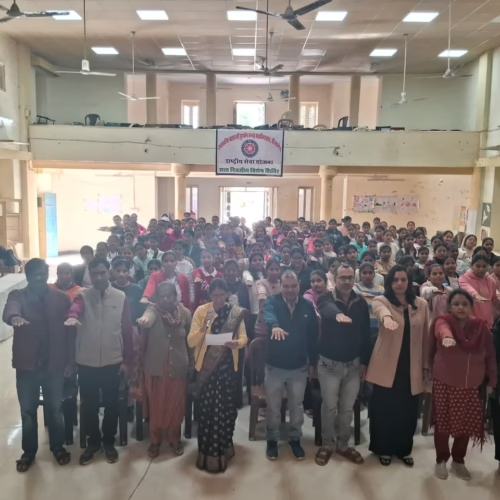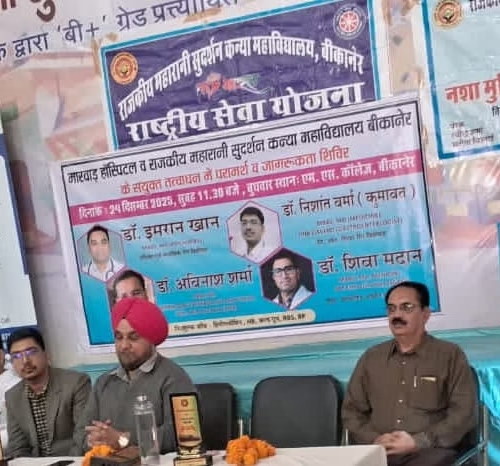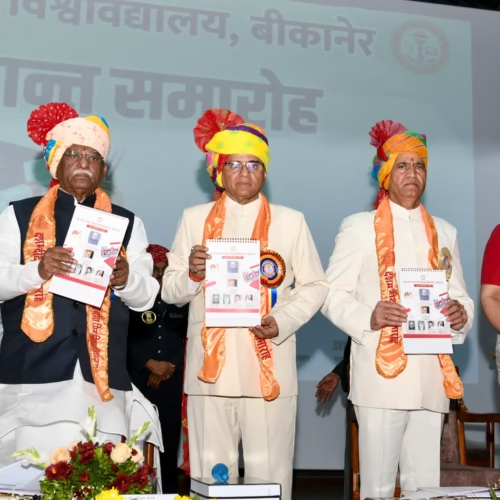BY DEFENCE JOURNALIST SAHIL | T.I.N. NETWORK
Operation Sindoor’s Strategic Aftershock: Pakistan’s Terror Commanders Lose Voice of Aggression, Adopt Political Tone Amid Fear and Fatigue
New Delhi | October 2025 — The aftershocks of Operation Sindoor continue to ripple across Pakistan’s military and terror establishment, transforming the once-defiant rhetoric of militant commanders into unusually subdued, politically cautious statements. Among the most telling examples of this transformation is the sudden change in tone of Rana Mohammad Ashfaq, a senior commander of the UN-designated terror outfit Lashkar-e-Taiba (LeT), who for years had been known for his fiery speeches and venomous propaganda against India.
Once a staunch advocate of “armed jihad” against India, Ashfaq’s latest public remarks—couched in the language of diplomacy and “dialogue”—have stunned security observers and counterterrorism analysts. His speeches, which earlier invoked violence and extremism, now sound more like cautious political appeals, echoing the rhetoric of Pakistan’s civil leadership rather than its militant commanders. This stark shift, Indian intelligence sources say, is a direct psychological and operational outcome of Operation Sindoor—India’s most audacious, coordinated, and multidimensional strike against terror infrastructure across the western frontier in recent history.
Operation Sindoor: A New Era of Indian Precision Warfare
Launched earlier this year, Operation Sindoor was a calibrated campaign executed under India’s expanding multi-domain warfare doctrine, integrating aerial precision strikes, long-range artillery, cyber and electronic warfare, and intelligence-led surgical operations. Unlike previous responses that were limited to border engagements, Sindoor was a full-spectrum punitive operation designed to destroy Pakistan-based launch pads, disrupt communication networks, and paralyze the operational hierarchy of terror outfits including LeT, Jaish-e-Mohammed, Hizbul Mujahideen, and the Balochistan-based TTP factions.
While official details remain classified, credible sources confirm that several LeT command centers in Bahawalpur, Fort Abbas, and Muzaffarabad were neutralized with precision-guided munitions. The impact was so deep that the ISI reportedly had to relocate its surviving handlers and trainers to safer civilian zones to avoid further targeting. For the first time in decades, India’s cross-border counter-terror campaign demonstrated extended-range strike capability, backed by real-time surveillance from satellites and UAV systems deployed across the western sector.
Rana Mohammad Ashfaq’s Silence: The Psychological Defeat
Rana Mohammad Ashfaq’s muted response following these developments is symbolic of a deeper crisis within Pakistan’s militant ecosystem. Once known for leading rallies in Punjab province with chants of “Ghazwa-e-Hind,” Ashfaq now uses terms like “peace,” “dialogue,” and “regional stability” in his media interactions.
Security analysts note that Ashfaq’s transformation isn’t voluntary—it is coerced by fear, attrition, and internal disarray. Following Operation Sindoor, India’s targeted intelligence campaign led to the neutralization of over a dozen key Lashkar operatives, including several of Ashfaq’s close aides who were involved in the planning and facilitation of infiltration attempts across the Line of Control (LoC).
According to counterterrorism officials, India’s covert operations also succeeded in disrupting financial pipelines of terror networks that flowed through Pakistan’s Punjab, UAE-based hawala chains, and CPEC-linked logistics channels. The result is a growing sense of helplessness among militant commanders—many of whom now face internal power struggles and funding shortages.
ISI’s Dilemma: The Shrinking Relevance of Proxy Warfare
The Inter-Services Intelligence (ISI), Pakistan’s deep-state agency long accused of nurturing and shielding these terror networks, now finds itself in a strategic bind. Operation Sindoor’s precision strikes not only crippled key terror assets but also exposed the extent of ISI’s dependency on non-state actors to maintain influence in Jammu & Kashmir.
With India’s proactive and intelligence-led deterrence now extending beyond the LoC, Pakistan’s long-standing doctrine of “bleeding India with a thousand cuts” has lost its operational edge. The fear of instant retaliation, combined with international isolation, has pushed even hardline commanders like Ashfaq to publicly mimic the civilian narrative—urging for “stability” and “peaceful coexistence.”
Indian intelligence assessments suggest that the ISI’s internal policy meetings over the last two months have reflected growing anxiety over India’s ability to sustain long-range, high-precision deterrence. The fear of further escalation—possibly targeting command nodes deep within Punjab and Khyber Pakhtunkhwa—has triggered an internal recalibration within Pakistan’s hybrid power structure.
The Global Reaction: Strategic Credibility for New Delhi
Operation Sindoor has also reshaped global perceptions of India’s strategic posture. Western analysts, particularly in the U.S. and France, have described it as a turning point in South Asian military deterrence. For years, India was seen as reactive to Pakistan’s provocations; Sindoor reversed that equation. By striking decisively yet proportionately, New Delhi sent a powerful signal that terror sanctuaries will no longer be tolerated under the cover of nuclear deterrence.
The United Nations Security Council, while refraining from direct comment, acknowledged India’s “right to defend its sovereignty against cross-border terrorism.” Simultaneously, Pakistan’s repeated attempts to internationalize the issue were met with muted responses even from its traditional allies like Turkey and China—indicating a shifting global alignment.
Pakistan’s Political Class and the “Militant Fatigue” Syndrome
Interestingly, the rhetorical alignment between figures like Rana Mohammad Ashfaq and Pakistan’s political leadership underlines what experts call a “militant fatigue syndrome”—a growing realization within Pakistan that decades of state-sponsored militancy have backfired economically, diplomatically, and socially.
Pakistan’s domestic narrative, once built on anti-India sentiment, is gradually turning inward as public frustration mounts over inflation, unemployment, and energy crises. The once-glorified “jihadi infrastructure” now faces open criticism even in Pakistani media, with journalists and civil society members questioning the cost of continued hostility toward India.
Indian Strategic Community: A Doctrine of Deterrence and Denial
Indian defence experts believe that Operation Sindoor marks the consolidation of India’s “Doctrine of Deterrence and Denial”—a strategy aimed not just at eliminating threats but ensuring they cannot re-emerge. The Indian Army, in coordination with the Indian Air Force and national intelligence agencies, has institutionalized real-time threat mapping across western and northern sectors, with particular focus on Bahawalpur, Rahim Yar Khan, and Balochistan’s insurgent corridors.
A senior defence official noted that India’s integrated theatre commands, coupled with indigenous technology like SVL drones, EW systems, and space-based reconnaissance assets, now allow for surgical responses with minimal collateral damage and maximum strategic effect.
Conclusion: Silence Speaks Louder Than Threats
Rana Mohammad Ashfaq’s newfound restraint is not diplomacy—it is a forced adaptation to reality. For the first time in decades, Pakistan’s militant leadership faces an adversary that combines military precision with psychological dominance. India’s Operation Sindoor has redrawn the strategic boundaries of South Asia’s security paradigm, proving that proactive deterrence is the most effective form of peacekeeping.
In the words of one Indian military analyst, “Ashfaq’s silence is not peace—it is paralysis. Operation Sindoor has silenced guns before they could be raised.”
BY DEFENCE JOURNALIST SAHIL | T.I.N. NETWORK
ऑपरेशन सिंदूर का असर: पाकिस्तान के आतंकी सरगनाओं की आवाज़ थमी, लश्कर-ए-तैयबा कमांडर राना मोहम्मद अशफ़ाक अब “राजनीतिक” सुर में बोल रहे हैं
नई दिल्ली | अक्टूबर 2025 — ऑपरेशन सिंदूर के बाद पाकिस्तान के आतंकी और सैन्य तंत्र में मची हलचल अब एक गहरे मनोवैज्ञानिक परिवर्तन का रूप ले चुकी है। भारत के निर्णायक और बहुआयामी जवाबी हमले ने न केवल आतंकियों की पनाहगाहों को तबाह किया, बल्कि उनके नेताओं के तेवर भी पूरी तरह बदल दिए हैं।
लश्कर-ए-तैयबा (LeT) के वरिष्ठ कमांडर राना मोहम्मद अशफ़ाक, जो कभी भारत के खिलाफ ज़हर उगलने के लिए कुख्यात थे, अब अपने भाषणों में “शांति”, “संवाद” और “स्थिरता” की बातें करने लगे हैं। यह वही व्यक्ति है जो पहले हर बयान में ‘जिहाद’ और ‘ग़ज़वा-ए-हिंद’ जैसे शब्दों से नफरत का ज़हर घोलता था।
भारतीय सुरक्षा विश्लेषकों के अनुसार यह कोई स्वैच्छिक परिवर्तन नहीं, बल्कि डर, हताशा और विनाश की वजह से आया एक जबरन बदलाव है। ऑपरेशन सिंदूर ने पाकिस्तान के आतंकी ढांचे को न केवल सामरिक रूप से तोड़ा बल्कि मनोवैज्ञानिक रूप से भी पस्त कर दिया।
ऑपरेशन सिंदूर: भारत की नई सैन्य शक्ति का प्रतीक
इस वर्ष प्रारंभ हुआ ऑपरेशन सिंदूर भारत की मल्टी-डोमेन वारफेयर (बहु-क्षेत्रीय युद्ध रणनीति) के तहत किया गया एक सुव्यवस्थित सैन्य अभियान था, जिसमें वायुसेना के सटीक हमले, लंबी दूरी की तोपें, साइबर ऑपरेशन, इलेक्ट्रॉनिक युद्ध और खुफिया एजेंसियों की संयुक्त कार्रवाई शामिल थी।
यह सिर्फ एक जवाबी कार्रवाई नहीं, बल्कि पाकिस्तान की आतंकी नीति पर सीधा प्रहार था। अभियान के दौरान भारत ने पाकिस्तान के भीतर स्थित लश्कर-ए-तैयबा, जैश-ए-मोहम्मद, हिजबुल मुजाहिदीन और तहरीक-ए-तालिबान पाकिस्तान (TTP) जैसे संगठनों के प्रशिक्षण शिविरों और लॉन्च पैड्स को सटीक निशाने पर लिया।
खुफिया सूत्रों के अनुसार बहावलपुर, फोर्ट अब्बास और मुज़फ्फराबाद में स्थित कई आतंकी ठिकाने ध्वस्त किए गए। इस कार्रवाई के बाद पाकिस्तान की खुफिया एजेंसी आईएसआई को अपने बचे हुए कमांडरों और हैंडलर्स को आम नागरिक इलाकों में शिफ्ट करना पड़ा, ताकि आगे के भारतीय हमलों से बचा जा सके।
राना अशफ़ाक की “खामोशी” — आतंक का मनोवैज्ञानिक पराभव
राना मोहम्मद अशफ़ाक, जो कभी पाकिस्तान के पंजाब प्रांत में सार्वजनिक मंचों पर भारत विरोधी रैलियों का नेतृत्व करता था, अब उसी लहजे में “संवाद” और “अमन” की बातें करने लगा है।
सुरक्षा एजेंसियों का कहना है कि यह बदलाव भारतीय कार्रवाई की सफलता का सीधा परिणाम है। ऑपरेशन सिंदूर के बाद भारत की खुफिया एजेंसियों ने अशफ़ाक के कई करीबी सहयोगियों को या तो मार गिराया या गिरफ्तार कर लिया। इन सहयोगियों में कई वे थे जो एलओसी पार आतंकियों की घुसपैठ कराने के लिए ज़िम्मेदार थे।
भारत ने न केवल आतंकी नेटवर्क के ठिकानों पर प्रहार किया बल्कि उनकी वित्तीय नाड़ियों को भी काट दिया — यूएई और सीपीईसी प्रोजेक्ट्स से चलने वाली हवाला चैनों को निशाने पर लेकर आतंक के फंडिंग तंत्र को कमजोर किया गया। इसने पाकिस्तान के आतंकी ढांचे को भीतर तक हिला दिया है।
आईएसआई की उलझन — “प्रॉक्सी वॉर” का ढांचा बिखरने लगा है
पाकिस्तान की कुख्यात खुफिया एजेंसी आईएसआई, जो दशकों से भारत के खिलाफ आतंकियों को संरक्षण और प्रशिक्षण देती रही, अब सबसे बड़े संकट से जूझ रही है। ऑपरेशन सिंदूर ने उसकी रणनीति की रीढ़ तोड़ दी।
अब तक आईएसआई “आतंकी प्रॉक्सी” के सहारे कश्मीर और पश्चिमी सीमाओं पर भारत के खिलाफ अपनी पकड़ बनाए रखती थी, परंतु भारत की नई सैन्य नीति ने इस रणनीति को पूरी तरह अप्रभावी बना दिया। अब हर आतंकी कार्रवाई के बाद पाकिस्तान को भारत के तत्काल और सटीक जवाब का डर सताने लगा है।
इसी कारण से आतंकियों के कमांडर अब “राजनीतिक” भाषा बोलने लगे हैं। वे जानते हैं कि किसी भी आक्रामक बयान का परिणाम अब विनाशकारी हो सकता है।
वैश्विक प्रतिक्रिया — भारत की सामरिक विश्वसनीयता में वृद्धि
ऑपरेशन सिंदूर ने भारत की वैश्विक छवि को भी मज़बूती दी है। अमेरिका, फ्रांस और कई यूरोपीय विश्लेषकों ने इसे दक्षिण एशिया में सुरक्षा संतुलन का निर्णायक मोड़ बताया है।
जहां पहले भारत को पाकिस्तान के हमलों का ‘रिएक्टिव’ जवाब देने वाला देश माना जाता था, वहीं अब वह एक ‘प्रोएक्टिव स्ट्राइकिंग पावर’ बनकर उभरा है। भारत ने यह स्पष्ट कर दिया है कि आतंकी ठिकाने अब सीमा पार सुरक्षित नहीं रहेंगे, चाहे वे किसी की भी सरपरस्ती में हों।
संयुक्त राष्ट्र ने भी भारत के “स्वरक्षा के अधिकार” को मान्यता दी, जबकि पाकिस्तान की शिकायतें अब अंतरराष्ट्रीय मंचों पर पहले जैसी गंभीरता से नहीं ली जा रहीं।
पाकिस्तान की राजनीति में “मिलिटेंट थकान” का दौर
पाकिस्तान के राजनीतिक वर्ग और समाज में अब एक नई थकान दिखाई दे रही है — विशेषज्ञ इसे “मिलिटेंट फटीग सिंड्रोम” कहते हैं। वर्षों से आतंकवाद को राज्य नीति का हिस्सा बनाकर इस्तेमाल करने की कीमत अब पाकिस्तान खुद चुका रहा है।
महंगाई, बेरोज़गारी और ऊर्जा संकट ने जनता का ध्यान आतंकी मुद्दों से हटा दिया है। यहां तक कि पाकिस्तानी मीडिया के कुछ हिस्से भी अब खुलकर सवाल करने लगे हैं — “क्या भारत से दुश्मनी हमें गरीबी और अस्थिरता के सिवा कुछ दे रही है?”
भारतीय दृष्टिकोण: रोकथाम और प्रतिरोध की नई नीति
भारतीय रणनीतिक समुदाय का मानना है कि ऑपरेशन सिंदूर भारत की “डॉक्ट्रिन ऑफ़ डिटरेंस एंड डिनायल” का सशक्त उदाहरण है — यानी आतंक को खत्म करना ही नहीं, बल्कि दोबारा पनपने की संभावना को भी नकार देना।
भारतीय थियेटर कमांड्स और इंटेलिजेंस नेटवर्क अब बहावलपुर, रहिम यार खान और बलूचिस्तान के आतंकी गलियारों पर लगातार नज़र रखे हुए हैं। उन्नत ड्रोन, सैटेलाइट निगरानी और इलेक्ट्रॉनिक वारफेयर सिस्टम्स ने भारत को पहले से कहीं अधिक सक्षम बना दिया है।
निष्कर्ष: अब खामोशी ही पराजय की आवाज़ है
राना मोहम्मद अशफ़ाक की नई “शांत” भाषा कूटनीति नहीं, बल्कि मजबूरी और पराजय का प्रतीक है। पहली बार पाकिस्तान के आतंकी नेतृत्व को यह अहसास हुआ है कि भारत अब सिर्फ सीमा की रक्षा नहीं कर रहा, बल्कि दुश्मन की सोच को भी बदल रहा है।
ऑपरेशन सिंदूर ने दक्षिण एशिया के सामरिक परिदृश्य को हमेशा के लिए बदल दिया है — यह साबित करते हुए कि आक्रामक निवारण (proactive deterrence) ही असली शांति की राह है।
एक भारतीय सैन्य विश्लेषक के शब्दों में —
“अशफ़ाक की खामोशी शांति नहीं, पंगुता है। ऑपरेशन सिंदूर ने उन बंदूकों को खामोश कर दिया जो अभी उठ भी नहीं पाई थीं।”



















Add Comment